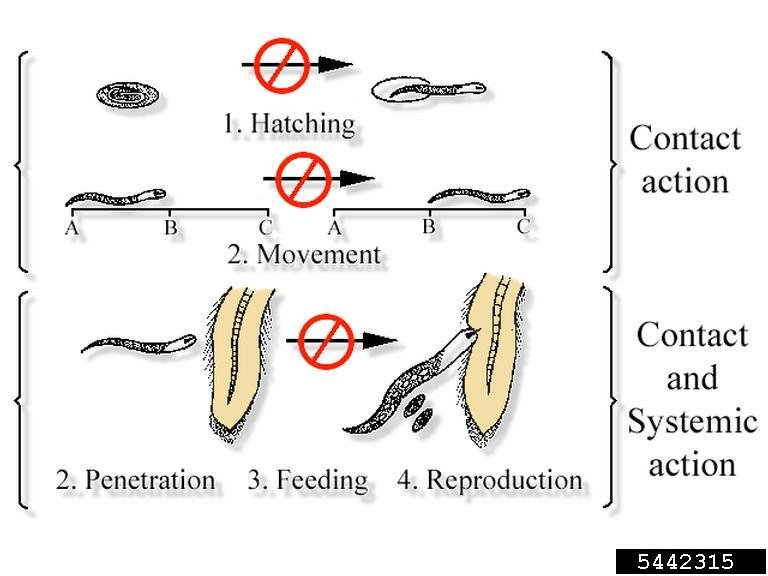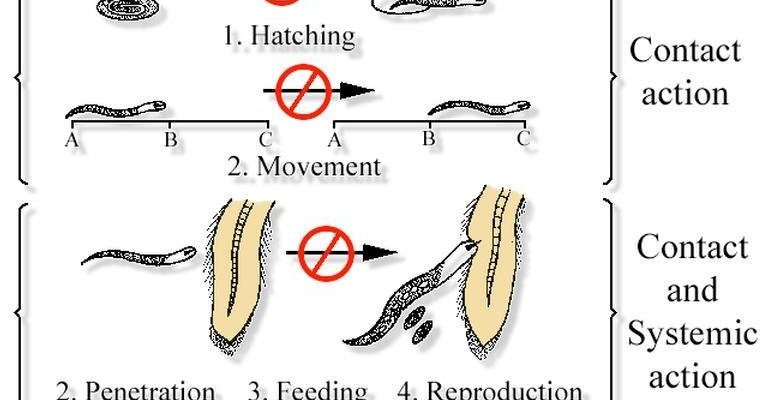
Understanding their feeding process can seem daunting at first, but it’s really about a series of clever steps that help them survive. Let’s dive into this world and break down how these captivating creatures feed and what makes them tick. Along the way, you’ll get a clear picture of their lifecycle and how they interact with their environment.
What Are Nematomorphs?
Nematomorphs, or horsehair worms, are long, thin parasites belonging to the phylum Nematomorpha. They typically live in moist environments, like rivers or damp soil, and often target insects, especially crickets and grasshoppers. You can think of them as nature’s little manipulators. They have a fascinating lifecycle that starts when a female lays eggs in water or on a substrate that a host will eventually consume.
Once the host eats the eggs, they hatch into larvae that quickly invade the host’s body. Here’s where things get interesting. The larvae grow inside the host, feeding on its nutrients while controlling its behavior. Imagine being a puppet on strings, with someone else tugging away at your movements. That’s essentially what happens with nematomorphs—they make their host act in ways that ultimately help the worm escape into the water to mature.
How Do Nematomorphs Feed?
The feeding mechanism of nematomorphs is rather unique compared to other parasites. Once the larvae are inside their host, they rely on the host’s body for nutrition. This means they are absorbing nutrients directly from the host’s digestive system.
1. Nutrient Absorption: Nematomorphs have a specialized cuticle that allows them to absorb essential nutrients through their skin. So while the host is munching on food, the nematomorph is basically “sipping” on all the good stuff.
2. Behavior Manipulation: When it’s ready to break free, the nematomorph exerts influence over the host’s nervous system. This manipulation often leads the host to seek water, where the nematomorph can exit and continue its lifecycle. It’s as if the nematomorph has mastered a secret control panel, guiding its host toward its next destination—water.
3. Environmental Dependency: The feeding and survival of nematomorphs depend heavily on their environment. They thrive in wet conditions, and their ability to manipulate host behavior is a fascinating adaptation to ensure they reach their aquatic habitat. Without this symbiosis, their lifecycle would be incomplete.
The Lifecycle of a Nematomorph
Understanding the lifecycle of nematomorphs gives insight into their feeding strategies. It generally has three main stages: egg, larval, and adult.
1. Egg Stage: Females lay eggs in water or damp areas. These eggs remain dormant until conditions are right for a host to consume them. This stage might feel like a waiting game, but it’s crucial for the nematomorph’s survival.
2. Larval Stage: After the host ingests the eggs, they hatch into larvae. Once inside, these larvae feed off the host’s nutrients like an uninvited guest at a buffet. Here’s where their ability to manipulate the host becomes apparent. They grow within the host, effectively turning it into a vessel for their growth.
3. Adult Stage: When the nematomorph has matured, it triggers the host to seek water, where it can emerge. Think of it as a dramatic exit from a stage. This transition is crucial for the adult nematomorph, marking its entry into the next phase of its lifecycle, where it will mate and continue the cycle.
What Do Nematomorphs Eat?
While adult nematomorphs do not feed in the traditional sense, their larvae have a more direct feeding relationship with their host. They mainly absorb:
– Nutrients from the Host: This includes proteins, carbohydrates, and whatever else the host consumes. It’s like siphoning off a bit of the host’s meal plan.
– Body Fluids: In some cases, they can absorb fluids from the host, further enhancing their nutrient intake. This relationship is tightly intertwined, demonstrating an impressive (and somewhat eerie) lifecycle.
When the nematomorph finally emerges from its host, it enters a phase where it lives on stored energy from its larval stage. It’s fascinating to see how these little creatures are designed to make the most out of their environments, ensuring survival through clever adaptation.
The Role of Nematomorphs in Ecosystems
Nematomorphs play an essential role in their ecosystems, acting as both predators and prey. Their lifecycle impacts the populations of their host insects, which can have ripple effects throughout the food chain.
1. Regulating Insect Populations: By targeting insects, nematomorphs help control their populations, preventing overpopulation in specific areas. It’s a natural form of pest control, keeping ecosystems balanced.
2. Food Source for Other Animals: Once they emerge, adult nematomorphs can serve as food for birds and other aquatic creatures. They add biodiversity to the food web, providing nourishment for those higher up the chain.
3. Indicators of Environmental Health: Because they thrive in clean, freshwater habitats, the presence of nematomorphs can indicate healthy ecosystems. If you spot them swimming around, it often means the environment is thriving.
Fun Facts About Nematomorphs
Just when you think you have them figured out, nematomorphs surprise you with a few fun facts!
– Length Diversity: Some species can grow up to a foot long, while others remain just a few millimeters. It’s a size spectrum that showcases their adaptability.
– Influence on Human Behavior: While they primarily target insects, some studies suggest that nematomorphs might hold keys to understanding parasitic manipulation’s broader implications, including potential impacts on human behavior. There’s still a lot to learn!
– Short Lifespan: Adult nematomorphs usually live for only a few days to weeks. It’s a fast-paced life dedicated to mating and laying eggs. Talk about a whirlwind romance!
The feeding mechanism of nematomorphs is a wonderful example of the complexity found in nature. From their remarkable ability to manipulate host behavior to their unique lifecycle, these creatures remind us of the intricate connections that exist in ecosystems. Whether you see them as creepy or captivating, nematomorphs play a significant role in maintaining balance in the environments they inhabit.
Understanding their feeding mechanisms and lifecycle can offer insights into the broader themes of survival and adaptability in nature. So next time you come across a “horsehair worm,” you might just appreciate all the clever strategies at work behind the scenes!

